Mining Costs
|
As with the Labor documents, the Direct/Indirect Mining cost sheets are also very large. (2545 x 1976!!) You can view them here, but it is not recommended for those with slow connections.
This document can be quite difficult to understand, (even if it weren't so large) so I'll try to analyze it in segments to break it down. First, let's look at the number of drills run in 1910. The image on the left shows which mining shafts are associated with each number. 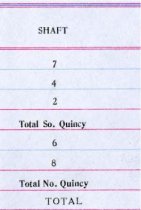
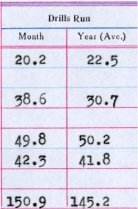
And here is the same segments taken from the 1915 spreadsheet. 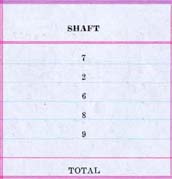
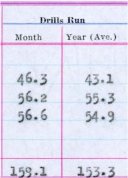
The thing that first stands out is the fact that in 1915, there were only 3 shafts being used, while in 1910 there were four. We've already seen that there were considerably more workers employed during 1910, so maybe that is an explanation for why there were less shafts being mined in 1915. It's possible that they just didn't have the manpower to mine all 4 shafts. But then we see the number of drills being run. In 1915, the company actually averaged more drills run than they did in 1910. This implies that while manpower may have been low, drilling capacity had actually improved or at least remained close to constant. This becomes even more obvious in the next two pictures. 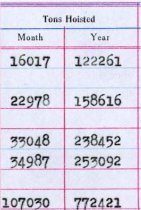 1915:
1915: 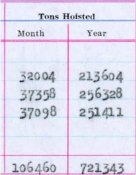
These images show the total number of tons of rock hoisted out of the mine during the month of July. Notice how close their numbers are between the two years. They both totaled about 100,000 tons of rock that month. In 1915, with almost 500 fewer workers than they had in 1910, and using only 3 instead of 4 shafts, the miners were able to drill approximately the same amount of rock out of the shafts in the same amount of time. From the mining company's perspective, this would be a dream come true. But these next two images show this point even more clearly. 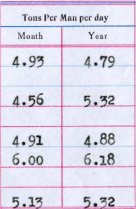 1915:
1915: 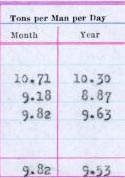
As the column headers indicate, these show the number of tons of rock mined by each man every day. The totals are once again on the bottom row. Could it be that every man in 1915 was hauling in twice the amount of the men in 1910? Were they working harder? Or drilling faster? Not really. It's just that the under the one-man drill system, they were achieving the same amount of drilling but they didn't have to divide it between the two men it took to run the old drills. So it has the appearance that each man was bringing in twice what they used to. This shows that the one-man drill was working. It was accomplishing the task that it was designed for. One man had become as productive as two had been before.
Finally, the main thing that companies are concerned with is money. We've seen that in 1915 they had 500 fewer workers on the payroll, and we've seen that there were fewer shafts being used, (which means less machinery, electricity, etc.) and we've seen that they were still extracting the same amount of rock. But how much does the company really save after all is said and done? These final images show the actual costs of mining during the two years. 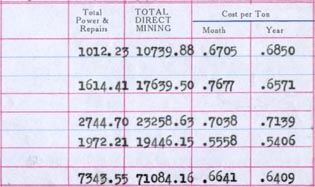 1915: 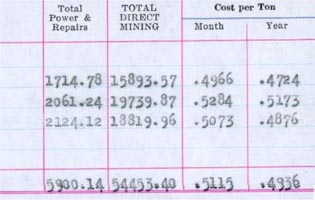
The total direct costs in 1910 for drilling a ton of rock was about 65 cents. In 1915 that cost lowered to about 50 cents, making a difference of only 15 cents. By today's standards, neither price seems very expensive. But multiply that by the 100,000 tons they were bringing in every month, and that's a difference of $15,000 they were saving every month in 1915. Now it sounds like a lot of money, even for today.
Miners' Strike Home |